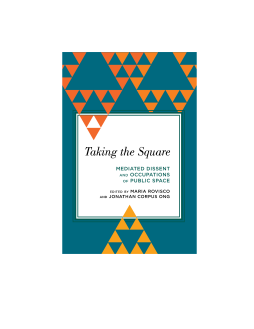
Additional Information
Book Details
Abstract
From the Arab uprisings to the indignados movement and the global Occupy sit-ins, recent protests and civil unrest have sparked new debates about political organisation, media representation and the nature of contemporary citizenship. But is there anything new about these occupations of public space? How are these protests legitimised or undermined by the intense mediation of streets and squares? And how are these different from expressions of dissent in other contexts, including those of ethnic minorities in the New Orleans mardi gras and survivors of natural disaster in the Philippines?
This book challenges the notion of a ‘disappearance of public space’ by reconsidering the significance of physical space and embodiment in the conduct and consequences of protest events. Looking at a range of assemblies–sustained and fleeting, spectacular and ordinary–this volume illuminates how square and street politics and their mediation become vehicles for new ideas of community, citizenship and public life.
Taking the Square provides an innovative perspective on civic resistance and social movement including case studies from the Arab uprisings to the indignados movement and Occupy. Contributors show how embodied protest events, assemblies and performances challenge conventional notions of media visibility to create new public spaces. Finally a book on culture, media and protest in Western and non-Western contexts.
Nicole Doerr, Associate Professor of Sociology, University of Copenhagen
Maria Rovisco and Jonathan Corpus Ong are both lecturers in media and communication at the University of Leicester.
This is a powerful collection of essays that is of high relevance to media and communication scholars focusing on protest movements as well as social movement scholars interested in the power of media and communication to organize and mobilize. The essays are thought-provoking and varied in how they approach the phenomenon of occupation and spatiality.
Bart Cammaerts, Associate Professor of Media and Communications, London School of Economics
Informative and insightful, this is a truly stimulating volume that captures the essence of recent social movements. Facilitated by digital media, this latest tidal wave of global activism has a strong spatial orientation. As the book shows, the protest strategies are diverse and dynamic in connecting, swarming, and repurposing the digital as well as the spatial.
Jack Qiu, Associate Professor, Chinese University of Hong Kong
Table of Contents
| Section Title | Page | Action | Price |
|---|---|---|---|
| Contents | 7 | ||
| Acknowledgements | 9 | ||
| Introduction | 11 | ||
| I: Street Politics, Occupations and Dissent | 23 | ||
| Chapter One: Identity, Place and Politics | 25 | ||
| Chapter Two: Occupying the Digital-Popular | 47 | ||
| Chapter Three: Place, Protest and Communciation | 65 | ||
| II: Democratic Struggles, New Publics and Mediated Protest | 85 | ||
| Chapter Four: Protest as Interruption of the Disaster Imaginary | 87 | ||
| Chapter Five: ‘We Live in Public’ | 107 | ||
| Chapter Six: The Relationship between Online and Offline Participation in a Social Movement | 127 | ||
| Chapter Seven: Mediating Movement in Occupied Spaces | 149 | ||
| III: The Performance of Protest | 167 | ||
| Chapter Eight: Performative Revolution in Egypt | 169 | ||
| Chapter Nine: Hybridity in Street Performance of Zulu and Mardi Gras Indians in New Orleans | 195 | ||
| Chapter Ten: Minority Groups and Strategies of Display and Dissent in Physical, Virtual and Hybrid Spaces | 217 | ||
| Index | 239 | ||
| Contributors | 251 |
